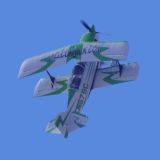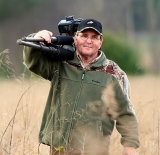- Forum
- Photography and Camera Forum
- Taking the Photo | Editing | The art of Photography!
- Beginner Photography Forum
- what is the best lens for eagles can someone please help me
what is the best lens for eagles can someone please help me
-

- Cjarvis
- Lone Wolf
-
- nikon d3000 / nikon d200
- Followers: 37
- Posts: 190
-
Points:
10
Post #44829
Post #44833
“Amateurs worry about equipment, professionals worry about money, masters worry about light, I just make pictures… ” ~ Vernon Trent
-

- bhowdy
- The Lounger
-
- Canon 1d Mark IV
- Followers: 138
- Posts: 1277
-
Points:
52
-
 Topic Author
Topic Author
- luckywish1
- Master of the Lens
-
- kodak easyshare and a canon rebel t2i
- Followers: 57
- Posts: 1578
-
Points:
10
Post #44836
-
 Topic Author
Topic Author
- luckywish1
- Master of the Lens
-
- kodak easyshare and a canon rebel t2i
- Followers: 57
- Posts: 1578
-
Points:
10
Post #44838
www.grandcouleedam.org/oldweb/balde.htm
-

- crystal
- Photo Guru
- Nikon D7000
- Followers: 101
- Posts: 3253
-
Points:
75
Post #44841
luckywish1 wrote: yes i am very dispointed and very depress about it because it didnt work. and i try and try and try and try and try. and we dont go to grand coulee damm all the time that was a special trip too. i spend 5 hours over there yesterday try and try and try and try to get it perfect and i feel that i waste my money on that stupid len that was only 125.00 now i just dont know what type i lens i need to get.
Wildlife photography is to go back to the same spot for hours to shoot to get the one perfect shot. If you do not have the patience to do that, then wildlife photography is not your thing. It's ok. It's not for everyone. You may enjoy wildlife, you may even enjoy taking a picture here and there, but until you can gain the patience and wait around for hours to take shots. You need more experience, that's all. And the only way you will get that is to go out more, and stay out long hours to get the perfect shot.
My husband and I will kayak down the river for an 8hr trip in hopes to find eagles. Sometime we do see eagles, sometimes we don't. When we do, we will stop the kayak where ever we can, up against the island, against shoreline rocks etc.. stay in kayak and photograph the eagle. We can get hundreds of shots of the eagle sitting there, but what we want is the eagle taking off, coming down to catch a fish and carrying the fish off to a tree and get some shots of it eating too. That has not happen. Usually the eagle just flys further out of our way. Then we continue to either kayak where it landed or if it left the river altogether, we continue down the river. Now imagine holding almost 8lb weight in your arms (camera and lens) up pointing into a tree at an eagle, clicking away, praying the river doesn't move you, and hoping to get that one perfect shot. And after all that, you still have to paddle down the river to the car. Now for me, I have very weak arms, it sucks, but I do it, because I love photography, I love wildlife.
Dedication
Patience
for wildlife photography.
-

- crystal
- Photo Guru
- Nikon D7000
- Followers: 101
- Posts: 3253
-
Points:
75
-
 Topic Author
Topic Author
- luckywish1
- Master of the Lens
-
- kodak easyshare and a canon rebel t2i
- Followers: 57
- Posts: 1578
-
Points:
10
Post #44845
-

- bhowdy
- The Lounger
-
- Canon 1d Mark IV
- Followers: 138
- Posts: 1277
-
Points:
52
Post #44846
Folks that are responding to you are being very nice, which you deserve because I am sure that you are a nice person. I would like to offer an honest opinion to you regarding photographing birds.
My passion and favorite photographic subject are birds, so I think that I can offer an experienced opinion.
While a mirror type lens is fun and a bit of a novelty you will not find a serious bird / wildlife photographer using one. Getting a sharp image with one takes lots of practice, patience and a good deal of luck, especially at long range, like your eagle image.
There is a reason that the most popular birding lens for a Canon camera is the 500mm f/4L IS lens ...... It works. This lens currently costs $6,900.00 and the newer Series II model of the same lens is $9,500.00.
Of course not everyone can afford this type of investment, so what are the options? My opinion is that a lens of at least 400mm is best for bird and wildlife photography. There will be times (many) that a 400mm lens will not have a long enough focal length, and you will want more. A teleconverter helps, if the lens and camera combination will accept both together.
Keep in mind that this is just one person's opinion (mine). I know that folks like to say that a 70-300mm lens works for bird / wildlife images .... and they do if you can get close enough to the subject, or if you can accept large crops of your images. I owned a 70-300mm and then a 100-300mm lens and was always wishing that I had more focal length (millimeters)
Here are some lenses that I would suggest that you learn more about;
Telephoto Zoom Lens
Canon 100-400mm telephoto zoom
Sigma 100-400mm telephoto zoom
Sigma 50-500mm telephoto zoom
Sigma 150-500mm telephoto zoom
Tamron 200-500mm telephoto zoom
Telephoto Prime Lens
Canon 300mm f/4L IS
Canon 400mm f/5.6L (not image stabilized)
Both of the prime lenses take teleconverters well, with limited image degradation. A prime lens has a fixed focal length and does not "zoom."
My reason for posting this is to offer one person's opinion, not to disappoint or hurt feelings. Your passion for wanting to photograph birds comes through in your posts, but I believe that you will need better lenses to achieve the results that you are hoping for.
Bob Howdeshell
"If I could tell the story in words, I wouldn't need to lug around a camera" ~ Lewis Hine
-

- Baydream
- Moderator
-
- Canoni/60D/70D/5DmkIII
- Followers: 388
- Posts: 11185
-
Points:
7278
Post #44858
bhowdy wrote: Penny,
Folks that are responding to you are being very nice, which you deserve because I am sure that you are a nice person. I would like to offer an honest opinion to you regarding photographing birds.
My passion and favorite photographic subject are birds, so I think that I can offer an experienced opinion.
While a mirror type lens is fun and a bit of a novelty you will not find a serious bird / wildlife photographer using one. Getting a sharp image with one takes lots of practice, patience and a good deal of luck, especially at long range, like your eagle image.
There is a reason that the most popular birding lens for a Canon camera is the 500mm f/4L IS lens ...... It works. This lens currently costs $6,900.00 and the newer Series II model of the same lens is $9,500.00.
Of course not everyone can afford this type of investment, so what are the options? My opinion is that a lens of at least 400mm is best for bird and wildlife photography. There will be times (many) that a 400mm lens will not have a long enough focal length, and you will want more. A teleconverter helps, if the lens and camera combination will accept both together.
Keep in mind that this is just one person's opinion (mine). I know that folks like to say that a 70-300mm lens works for bird / wildlife images .... and they do if you can get close enough to the subject, or if you can accept large crops of your images. I owned a 70-300mm and then a 100-300mm lens and was always wishing that I had more focal length (millimeters)
Here are some lenses that I would suggest that you learn more about;
Telephoto Zoom Lens
Canon 100-400mm telephoto zoom
Sigma 100-400mm telephoto zoom
Sigma 50-500mm telephoto zoom
Sigma 150-500mm telephoto zoom
Tamron 200-500mm telephoto zoom
Telephoto Prime Lens
Canon 300mm f/4L IS
Canon 400mm f/5.6L (not image stabilized)
Both of the prime lenses take teleconverters well, with limited image degradation. A prime lens has a fixed focal length and does not "zoom."
My reason for posting this is to offer one person's opinion, not to disappoint or hurt feelings. Your passion for wanting to photograph birds comes through in your posts, but I believe that you will need better lenses to achieve the results that you are hoping for.
Your comments are "spot on". Those longer (400 - 500mm) low light lenses are the way to go. For me right now, my 70-300 IS will have to do (sometimes adding a 2x convertor). All of the commnets on patience are exactly right. During the summer, I have days when eagles show up twice or more a day, then nothing for a week or more). Thus, even in prime feeding grounds, a shot is NEVER guaranteed. Also remember that when you are using a lens of 300+mm, a tripod is almost a absolute. Good shots can be had hand-held but the practice required is years in the making and even then, that steadiness is important.
Thanks for the thoughtful lesson and advice.
Penny - I spent two days in Gros Mourne National Park in Newfoundland, which is the largest concentration of moose anywhere and did not get to see even one moose. I did the same for two days at Moosehead Lake in Maine, and again, no moose (until we saw a cow and calf cross the road quite a distance away. Patience,
Shoot, learn and share. It will make you a better photographer.
fineartamerica.com/profiles/john-g-schickler.html?tab=artwork
-

- crystal
- Photo Guru
- Nikon D7000
- Followers: 101
- Posts: 3253
-
Points:
75
Post #44863
bhowdy wrote: Penny,
Folks that are responding to you are being very nice, which you deserve because I am sure that you are a nice person. I would like to offer an honest opinion to you regarding photographing birds.
My passion and favorite photographic subject are birds, so I think that I can offer an experienced opinion.
While a mirror type lens is fun and a bit of a novelty you will not find a serious bird / wildlife photographer using one. Getting a sharp image with one takes lots of practice, patience and a good deal of luck, especially at long range, like your eagle image.
There is a reason that the most popular birding lens for a Canon camera is the 500mm f/4L IS lens ...... It works. This lens currently costs $6,900.00 and the newer Series II model of the same lens is $9,500.00.
Of course not everyone can afford this type of investment, so what are the options? My opinion is that a lens of at least 400mm is best for bird and wildlife photography. There will be times (many) that a 400mm lens will not have a long enough focal length, and you will want more. A teleconverter helps, if the lens and camera combination will accept both together.
Keep in mind that this is just one person's opinion (mine). I know that folks like to say that a 70-300mm lens works for bird / wildlife images .... and they do if you can get close enough to the subject, or if you can accept large crops of your images. I owned a 70-300mm and then a 100-300mm lens and was always wishing that I had more focal length (millimeters)
Here are some lenses that I would suggest that you learn more about;
Telephoto Zoom Lens
Canon 100-400mm telephoto zoom
Sigma 100-400mm telephoto zoom
Sigma 50-500mm telephoto zoom
Sigma 150-500mm telephoto zoom
Tamron 200-500mm telephoto zoom
Telephoto Prime Lens
Canon 300mm f/4L IS
Canon 400mm f/5.6L (not image stabilized)
Both of the prime lenses take teleconverters well, with limited image degradation. A prime lens has a fixed focal length and does not "zoom."
My reason for posting this is to offer one person's opinion, not to disappoint or hurt feelings. Your passion for wanting to photograph birds comes through in your posts, but I believe that you will need better lenses to achieve the results that you are hoping for.
-

- photobod
- Paparazzi
-
- Nikon D800 + D300
- Followers: 563
- Posts: 8907
-
Points:
150
Post #44891
www.dcimages.org.uk
"A good photograph is one that communicate a fact, touches the heart, leaves the viewer a changed person for having seen it. It is, in a word, effective." - Irving Penn
-
 Topic Author
Topic Author
- luckywish1
- Master of the Lens
-
- kodak easyshare and a canon rebel t2i
- Followers: 57
- Posts: 1578
-
Points:
10
Post #45936
Post #45950
crystal wrote:
bhowdy wrote: Penny,
Folks that are responding to you are being very nice, which you deserve because I am sure that you are a nice person. I would like to offer an honest opinion to you regarding photographing birds.
My passion and favorite photographic subject are birds, so I think that I can offer an experienced opinion.
While a mirror type lens is fun and a bit of a novelty you will not find a serious bird / wildlife photographer using one. Getting a sharp image with one takes lots of practice, patience and a good deal of luck, especially at long range, like your eagle image.
There is a reason that the most popular birding lens for a Canon camera is the 500mm f/4L IS lens ...... It works. This lens currently costs $6,900.00 and the newer Series II model of the same lens is $9,500.00.
Of course not everyone can afford this type of investment, so what are the options? My opinion is that a lens of at least 400mm is best for bird and wildlife photography. There will be times (many) that a 400mm lens will not have a long enough focal length, and you will want more. A teleconverter helps, if the lens and camera combination will accept both together.
Keep in mind that this is just one person's opinion (mine). I know that folks like to say that a 70-300mm lens works for bird / wildlife images .... and they do if you can get close enough to the subject, or if you can accept large crops of your images. I owned a 70-300mm and then a 100-300mm lens and was always wishing that I had more focal length (millimeters)
Here are some lenses that I would suggest that you learn more about;
Telephoto Zoom Lens
Canon 100-400mm telephoto zoom
Sigma 100-400mm telephoto zoom
Sigma 50-500mm telephoto zoom
Sigma 150-500mm telephoto zoom
Tamron 200-500mm telephoto zoom
Telephoto Prime Lens
Canon 300mm f/4L IS
Canon 400mm f/5.6L (not image stabilized)
Both of the prime lenses take teleconverters well, with limited image degradation. A prime lens has a fixed focal length and does not "zoom."
My reason for posting this is to offer one person's opinion, not to disappoint or hurt feelings. Your passion for wanting to photograph birds comes through in your posts, but I believe that you will need better lenses to achieve the results that you are hoping for.

+1
“Amateurs worry about equipment, professionals worry about money, masters worry about light, I just make pictures… ” ~ Vernon Trent
- Forum
- Photography and Camera Forum
- Taking the Photo | Editing | The art of Photography!
- Beginner Photography Forum
- what is the best lens for eagles can someone please help me
Latest Reviews
The Canon EOS R100 is an entry-level mirrorless camera introduced in 2023. But just because it’s an entry-level camera doesn’t mean it’s a bare-bones camera. Find out why in this review!
Nikon’s retro-looking Nikon Zfc is anything but retro. Under its classic body is a host of features and amenities that make it a worthwhile compact mirrorless camera for 2024.
The Canon EOS R50 is one of the newest R-system cameras from Canon. Is it worth your money? Find out all the details you need to know in this comprehensive review.
The Sony FE 70-200mm f/2.8 GM OSS II is Sony’s flagship mirrorless zoom lens. As such, it’s loaded with features and has a top-shelf build quality that makes it a top pick!
Forum Top Posters
-
1Foggy 1 post
Latest Articles
Using leading lines in photography helps improve the composition by drawing viewers in and leading their eye from the foreground to the background. Explore some fine examples of this in this guide!
The Insta360 has one of the best lineups of action cams and 360-degree cameras. With these Insta360 accessories, you can elevate your photography and videography game!
Creating impactful photos of landscapes depends on many factors, not the least of which is your talent behind the lens. This guide explores other elements required for the best product.
The Canon EOS R100 is an entry-level mirrorless camera introduced in 2023. But just because it’s an entry-level camera doesn’t mean it’s a bare-bones camera. Find out why in this review!
Are you ready to upgrade your camera? Before buying new, you might consider the value of purchasing used gear to save money.
The Olympus OM-D E-M10 Mark IV is a micro four thirds camera released in 2020. It’s an entry-level system along with the OM-D E-M5 Mark III. Use this guide to determine which one is best for you!
Blue hour photography might not be as well known as golden hour photography, but it is every bit as good a time to create epic images of landscapes. Learn how in this quick tutorial!
Nikon’s retro-looking Nikon Zfc is anything but retro. Under its classic body is a host of features and amenities that make it a worthwhile compact mirrorless camera for 2024.















